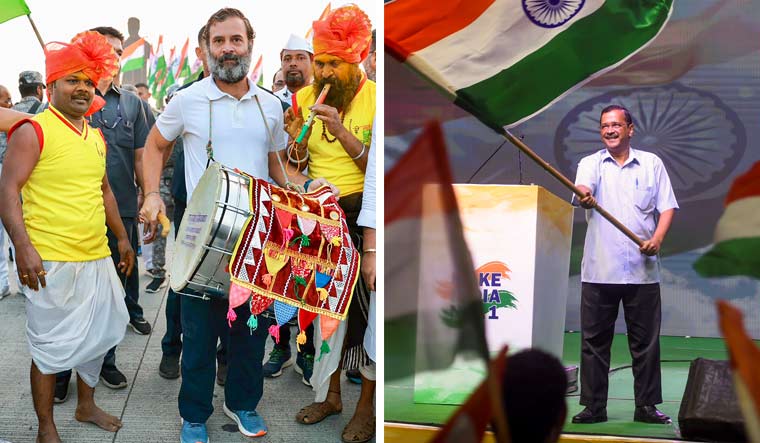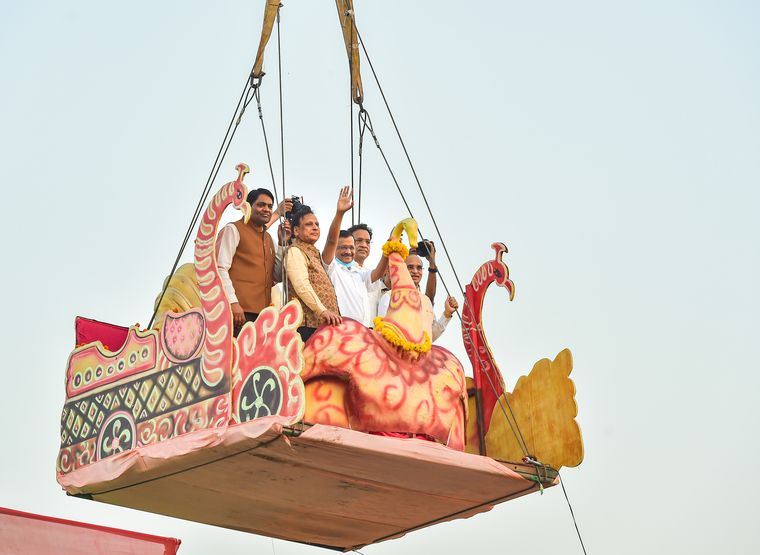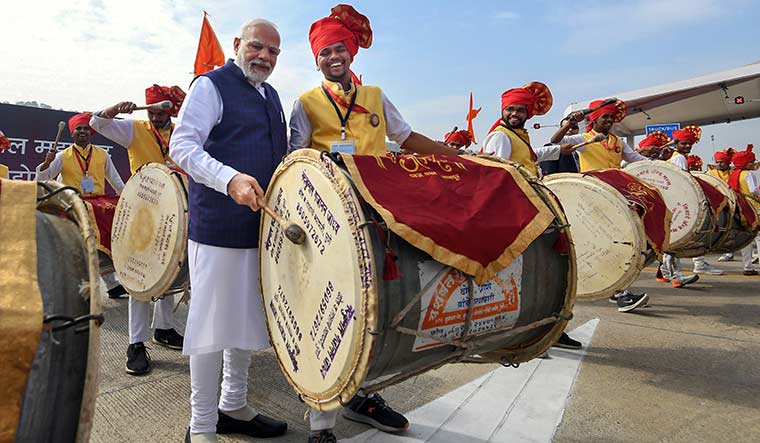On December 8, 2013, the results of the assembly elections in Delhi were announced, and, for the Congress there was nothing to cheer about. The party ended up with just a handful of seats after having ruled the state for 15 years. The then Congress vice president, Rahul Gandhi, appeared before the media at the party headquarters, putting up a brave front; he talked about transforming the organisation. The arrival on the scene of a new political party—the Aam Aadmi Party—was not lost on him.
The challenge posed by AAP leader Arvind Kejriwal was on top of Rahul’s mind. It was apparent in his reaction even as he struck an optimistic note. Said Rahul, “I am going to make sure that a transformation happens, and I will do it in ways in which you cannot even imagine. We will involve people in a way you cannot even imagine. I think the AAP has involved a lot of people, which the traditional parties did not. Both the major parties [the BJP and the Congress] are thinking about politics in a traditional way in Delhi. The Congress needs to change that.” If Rahul had inherited a traditional party well past its prime and struggling to reinvent itself, Kejriwal led a party that promised to do things differently.
Soon, in the Lok Sabha polls in 2014, it was apparent that the transformation in the Congress had not happened and the leadership credentials of Rahul were hit hard. The Congress registered its worst ever performance in a general election and plummeted to its least ever number of seats. On the other hand, Kejriwal got a rude reality check as his party fell flat on its face in its effort to punch way above its weight. The bureaucrat-turned-activist-turned-politician was dealt an extremely humiliating defeat by the BJP’s poster boy, Narendra Modi, in Varanasi.
Since then, the journeys of Rahul and Kejriwal have been disparate even as their paths crossed and their fortunes intertwined. The AAP has sought to occupy the Congress’s space in its endeavour to grow. Kejriwal has made no secret of his ambition to be seen as the prime challenger of Modi, a position which the Congress insists belongs to Rahul. Rahul has had to deal with the ignominy of a series of electoral defeats topped by the humiliating loss in the Lok Sabha polls of 2019 and the ever growing questions about his leadership abilities. Kejriwal, buoyed by the AAP finding a perch outside Delhi, is looking to make the giant leap onto the national centrestage.
In the run-up to the Lok Sabha elections in 2024, the two leaders present a compelling study in contrast. They are, arguably, the two most prominent leaders vying for the position of Modi’s prime challenger. Rahul’s claims arise from the fact that he is the leader of the principal opposition party, and that he belongs to the Gandhi family. On the other hand, Kejriwal, who has painstakingly fashioned himself as the aam aadmi, has entered politics in an effort to reform the system. He is keen to be seen as Modi’s main opponent on the basis of the growth of his party and his own stature over the last decade. Regional stalwarts like Mamata Banerjee, K. Chandrashekar Rao and Nitish Kumar have made moves to be perceived as an alternative to Modi at the national level. But, where they fall short is having a pan-India recognition.
If the story of Rahul is dealing with themes of survival and redemption, for Kejriwal it is about fulfilling an ambition and taking the tale of an outsider emerging as an unlikely political hero to its logical conclusion.
With a little over a year remaining for the next Lok Sabha elections, Rahul has hit the streets. At a time when nothing seemed to work, with regard to either repairing his own image and being seen as a dependable leader or helping his party get back to winning ways, the only option left for Rahul was to go to the people. He has done exactly that by embarking on a cross-country Bharat Jodo Yatra.
Questions were increasingly being asked, within and outside the Congress, about whether Rahul was proving to be a liability rather than an asset for the party, and whether he could take the grand old party through its darkest phase yet. Congress leaders hope that the yatra will help Rahul get rid of his image problem. His direct connect with the people during the yatra should help him to be recognised as a leader who is making a supreme effort to bring the focus on the issues of the common man. He is striving to come across as empathetic to the problems of the people.
Sporting an overgrown beard, Rahul is seen interacting with varied sections of society, the routine followed everyday since September when the yatra began. There is an expectation in the party that he will be seen by the people in a different light and the slights of political rivals will have no impact. It is also felt that by the very act of completing the 3,200km-long yatra, from Kanyakumari to Kashmir, Rahul would have established his claims to being committed to the cause of the people and dealt with the criticism that he has thus far not been consistent and reliable.
Rahul and his party insist that the yatra cannot be seen in the context of polls in any one particular state. For the party, it is a desperate move to keep its head over water and stay relevant in the national consciousness. There is also the hope that the yatra will re-energise the organisation and give a sense of direction to the demoralised party workers.
However, the Congress’s decimation in Gujarat has prompted questions about the purpose of the yatra. Critics have questioned Rahul’s decision to stay away from the campaign. While he did not campaign in Himachal Pradesh and left it to sister Priyanka Gandhi Vadra to be the face of the party’s electioneering there, in Gujarat, Rahul made a cameo appearance. A contrast was drawn with the last elections in Gujarat, where Rahul had led a high-decibel campaign for the Congress and came close to winning. He is also faced with questions on why the party failed to build on the momentum created by the party’s surprisingly good performance in 2017.
Kejriwal, on the other hand, is building up his party and his own image through electoral gains. Soon after winning Delhi in February 2020 for a second time, he declared his party’s expansion plans, launching a nationwide membership drive and stating that the AAP would contest most of the state elections in the run up to the Lok Sabha polls in 2024.
The AAP’s aggressive campaign in Modi’s home turf, Gujarat, was part of its plan to be seen as a national entity. Having Kejriwal as the face of the campaign amounted to pitting him directly against Modi and the electoral gains in the state—five seats and around 13 per cent vote share— did help the AAP gain the stature of a national party. To have that label is important for the AAP in the run up to the Lok Sabha elections.
Rahul is faced with the grim scenario of the Congress’s shrinking national footprint, and hence a dearth of governance models to present to the people as an alternative to the BJP regime. In the case of Kejriwal, the AAP’s Delhi model of governance, with its populist measures, has been taken to other states in the form of ‘Kejriwal’s guarantees’.
Rahul has, consistently, spelt out his opposition to what he describes as the divisive politics of the RSS-BJP. However, both Rahul and the Congress have been accused of indulging in soft-hindutva in a bid to blunt the BJP’s allegations that the principal opposition party has been practising appeasement of minorities. The party grapples with a lack of clarity on how to deal with the majoritarian politics of the BJP, since it is wary of polarising the discourse. Polarisation of election narrative, it knows, works to the advantage of the saffron party.
Kejriwal, who had declared himself a Hanuman bhakt (devotee) and recited the Hanuman chalisa hymns during the campaign for the assembly elections in Delhi in 2020, in a bid to snub the BJP’s efforts to paint him and the AAP as anti-Hindu, has taken a distinctive right turn, ideologically, since then. From his entire cabinet holding a televised Diwali pujan (worship) along with him, to visiting the Ram Janmabhoomi in Ayodhya, to sponsoring the pilgrimage of senior citizens, and to demanding that currency notes should bear the images of Hindu divinities Lakshmi and Ganesh, Kejriwal has worn his Hindu devoutness on his sleeve.
The liberal camp, which had cheered his victory over the BJP in the assembly elections in Delhi, were disappointed with his cautious tightrope walk over the communal riots in northeast Delhi. The AAP has been described by political analysts as a softer version of the BJP, and the Congress has accused it of being the B team of the BJP. However, AAP leaders insist that the party is different because it has always talked about peace and brotherhood, and that the minorities do not feel threatened by it.
The AAP has got the recognition of being a state party in four states—Delhi, Punjab, Goa and Gujarat. It was, realistically, aiming to dislodge the Congress as the main opposition party in Gujarat. While it fell way short of that aim, prompting rivals to say that Kejriwal’s claims cannot be taken seriously, AAP leaders say the party has breached the fortress in Gujarat and will work on the gains made.
In the run up to the Lok Sabha elections, for Kejriwal’s plans to work, a lot would depend on how the Congress performs electorally hereon.
The Bharat Jodo Yatra could help Rahul establish himself as a leader who, in contrast to the image of being a dynast who got power on a platter, will perform tapasya (penance) for the people. While he would have accomplished the arduous task of walking thousands of kilometres in solidarity with the issues of the people, winning assembly elections that take place before the Lok Sabha polls would be important for the Congress to offer any sort of challenge to Modi and his party.
Nine states go to the polls in 2023: Tripura, Meghalaya, and Nagaland in Feburary; Karnataka in May, and Rajasthan, Chhattisgarh, Madhya Pradesh, Telangana and Mizoram in the fag end of the year. These are states where the AAP does not have much of a presence.
While Kejriwal has appointed in-charges for the election-going states, making a splash will not be easy, with state-specific factors coming into play. The AAP’s electoral outing in Punjab in 2017 had not lived up to the hype, and it was only five years later that it could win the state, aided by the strong resentment among the people towards the traditional parties. In Goa, the AAP has failed to make a mark despite running a high decibel campaign in two consecutive state polls, although it did win two seats in its second attempt in early 2022. In Gujarat, the high-octane campaign ended up being grossly disproportionate to the seats AAP gained ultimately.
Rahul and Kejriwal are two leaders with contrasting backstories and whose politics could not be less different from each other, but whose futures are interlinked.





